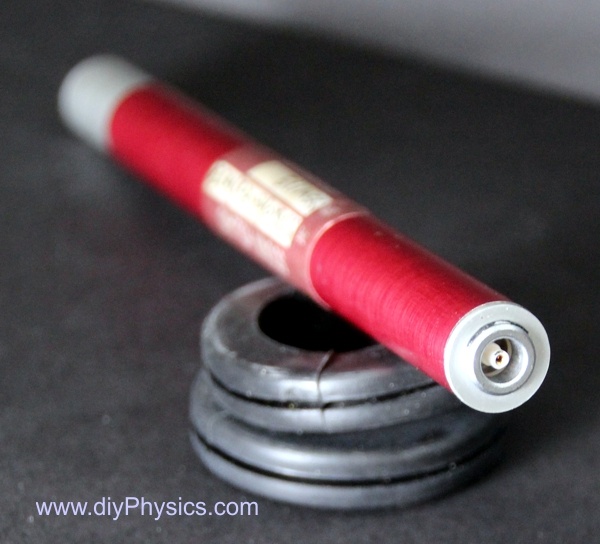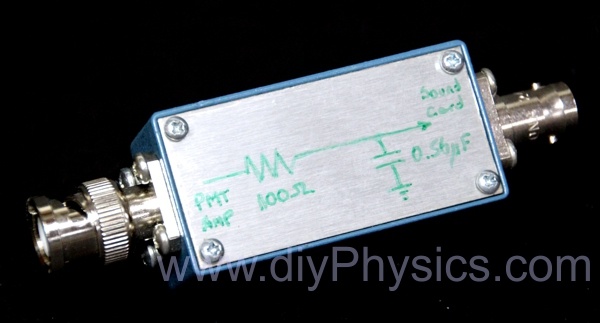
We prepared a short note on how to build a dynode voltage divider network for inexpensive surplus XP2422/SN photomultiplier tubes. The XP2422/SN PMT is especially suited for gamma-ray spectral analysis when coupled to a NaI(Tl) scintillation crystal because of its high pulse-height resolution (PHR). The XP2422/SN is available from Sphere Research in Canada.



 Many surplus scintillation probes have a single connector through which the PMT is fed with high voltage and the anode signal is output. However, this may require an external “Bias-T” (a high voltage / signal splitter) to connect the probe to a high-voltage power supply that is separate from the PMT amplifier/processor.
Many surplus scintillation probes have a single connector through which the PMT is fed with high voltage and the anode signal is output. However, this may require an external “Bias-T” (a high voltage / signal splitter) to connect the probe to a high-voltage power supply that is separate from the PMT amplifier/processor.  Figure 34 in the
Figure 34 in the 

